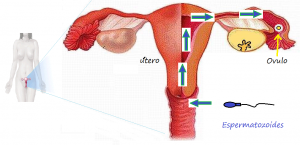A woman’s normal menstrual cycle can vary between 23 and 35 days, with an average of 28 days. It is also normal for a woman to have one or two anovulatory cycles in a year that are expressed as an irregular menstrual cycle.
When cycles are too short or too long, this means that the ovary is not ovulating. This is called chronic anovulation.
Chronic anovulation can have consequences for a woman’s health. The first of these may be difficulty in achieving pregnancy. Others may include anemia, the appearance of acne, weight gain, menstrual cramps, endometriosis , and cholesterol problems. In its most extreme form, anovulation can end in Polycystic
Ovary Syndrome. When you are having persistently irregular cycles, you should consult a gynecologist to look for and treat the cause. Sometimes, when a person is not actively seeking pregnancy, one form of treatment is to use birth control pills. Contrary to what some myths about them assume, contraceptive pills, in addition to regularizing cycles, can protect future fertility by maintaining hormone levels within normal ranges and thus reducing the possibility of endometriosis and polycystic ovary syndrome.
When the person is trying to get pregnant, the treatment consists of stimulating the ovary to produce mature eggs normally. There are many medications to induce ovulation, but they must be used under medical supervision, so prior evaluation in this type of case is essential to determine the type of medications that should be taken into consideration.
InSer Group

